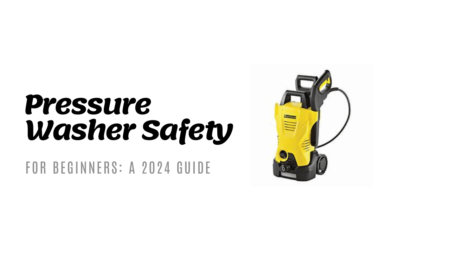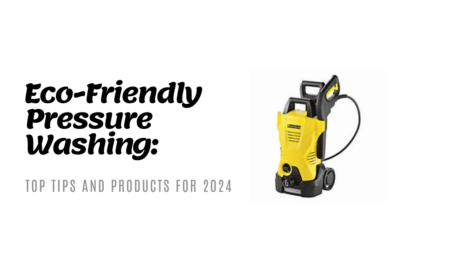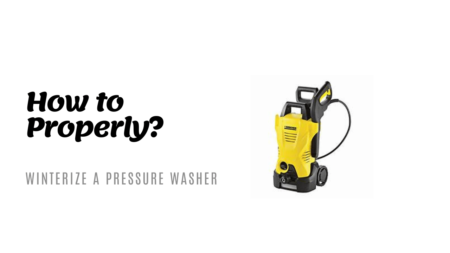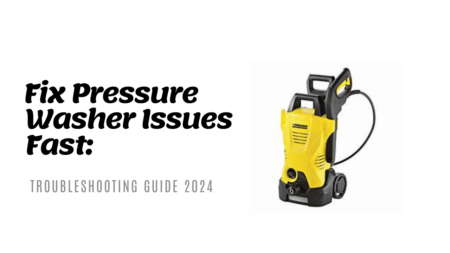
We understand the importance of maintaining the beauty and longevity of your painted wood surfaces, and that’s why we’re exploring the proper cleaning methods for painted wood. Pressure washing is an effective cleaning method, but it can damage painted wood if not done properly. This article will provide guidance on safe pressure washing painted wood surfaces.
Pressure washing uses pressurized water to remove dirt, mold, mildew, and other contaminants from various surfaces. It’s faster and more effective than hand scrubbing. Many homeowners use pressure washers to clean driveways, decks, patios, siding, and outdoor furniture.
Understanding Pressure Washing
Pressure washing, also known as power washing, uses an electric or gas motor to power a water pump that pressurizes water. Typical residential pressure washers operate between 1500 – 4000 PSI (pounds per square inch). The pressurized spray of water is directed through a wand or nozzle. This concentrated spray provides significant cleaning power to blast away stubborn dirt and grime. But can it be used on painted wood?
Pressure washing is commonly used on concrete, vinyl, brick and other hard surfaces. It’s also safe for unfinished wood that can withstand the pressurized spray. However, painted or stained wood requires gentler cleaning to avoid damaging the finish.
Understanding Pressure Washing Painted Wood
Pressure washing painted wood surfaces can be a great way to remove dirt, grime, and stains, but it is important to understand the risks involved. One of the main risks of pressure washing painted wood is that the high-pressure water can strip away the paint, leaving the wood exposed and vulnerable to damage. Another risk is that if the pressure washer is not used properly, it can create uneven pressure on the wood, leading to streaks or lines in the paint.
To avoid these risks, it is important to use the right equipment and techniques when pressure washing painted wood. First, choose a pressure washer with adjustable pressure settings, so you can start with a lower pressure and gradually increase if needed. This will help prevent damage to the paint and wood. Second, use a wide-angle nozzle or attachment to distribute the pressure more evenly and reduce the risk of streaks or lines.
In addition to these risks, it is also important to consider the type of paint on the wood surface. Different types of paint may require different pressure washing techniques or may not be suitable for pressure washing at all. Always check with the paint manufacturer or a professional for guidance on pressure washing painted wood surfaces.
By understanding the risks and using the proper techniques, pressure washing painted wood can be an effective and safe way to clean and refresh your surfaces.
Steps to Follow During Pressure Washing Painted Woods :
To successfully pressure wash painted wood without causing damage, follow these steps:
Choose the Right Pressure Washer
Start by selecting the right pressure washer. Opt for a machine with adjustable pressure settings. For painted wood, you’ll want to use the lowest pressure possible to get the job done effectively. A pressure washer with a PSI (pounds per square inch) rating of around 1500 to 2000 is generally safe for most painted surfaces.
Use the Right Nozzle
The nozzle you choose can make a world of difference. A wide, fan-shaped nozzle with a low angle (around 25–40 degrees) will disperse the water over a larger area, reducing the intensity of the spray. This helps protect the paint while still providing ample cleaning power.
Maintain the Right Distance
Keep your distance; it’s not personal! To prevent damage to the paint, maintain a distance of at least 12 to 18 inches from the painted wood surface. This allows the water to dislodge dirt without exerting excessive force.
Test an Inconspicuous Area
Before going all-in, test your pressure washer on a small, inconspicuous area of the painted wood. This will help you gauge the right pressure and nozzle distance without risking a visible mishap. Always aim the pressure washer nozzle at a slight angle rather than directly perpendicular to the surface. This reduces the chances of water getting behind the paint and causing it to peel.
Keep It Moving
Avoid lingering in one spot for too long. Keep the nozzle moving to distribute the water evenly and prevent concentrated pressure in a single area. Sometimes, water alone won’t cut it. If you’re dealing with stubborn stains or mildew, consider adding a mild detergent to your pressure washer’s reservoir. Ensure it’s appropriate for painted surfaces and follow the manufacturer’s instructions.
Rinse Thoroughly
After the pressure washing is complete, rinse the surface thoroughly with plain water to remove any remaining detergent residue. This step is crucial to preventing damage to the paint over time. Once the surface is dry, inspect it carefully. If you notice any paint damage or areas that need touch-ups, take the time to repaint those sections promptly.
- can effectively remove dirt, grime, and stains, restoring the wood to its original beauty.
- can be a time-saving option compared to manual scrubbing or using chemical cleaners.
- can reach into nooks and crannies that are difficult to clean by hand.
- It can clean areas such as the gaps between boards or intricate woodwork with ease.
- can strip away the paint if not used correctly, leaving the wood exposed to potential damage.
- can create streaks or lines in the paint, impacting the overall appearance of the wood.
- can damage the surface
How Often to Pressure Wash Painted Wood
When you want to clean painted wood with a pressure washer, how often you should do it depends on a few things. These things include where the wood is, how dirty it gets, and how good the paint is. Usually, it’s a good idea to use a pressure washer on painted wood once or twice a year to keep it looking nice and clean.
If you pressure wash the painted wood too much, it could damage the paint and even make it chip or peel off. Also, consider the type of paint used because some kinds might be more likely to get harmed by pressure washing. In the end, the best thing to do is to look at the wood and decide. If it’s very dirty or stained, you might need to pressure wash it more often. If it’s still in good shape and not too dirty, you can wait longer between pressure washing sessions.
The Do’s of Pressure Washing
Non-Wood Siding:
Non-wood siding materials such as vinyl, metal, or fiber cement can greatly benefit from pressure washing. Over time, these surfaces can accumulate dirt, grime, and mildew, which can dull their appearance. Pressure washing can effectively remove these contaminants, restoring the siding’s original color and shine. . Use a fan nozzle and keep the pressure washer moving to clean off dirt, grime, mold and mildew. Stay at least 12 inches back.
Driveways
Driveways see a lot of wear-and-tear from vehicles, weather and seasonal changes. Over time oil stains, tire marks and dirt build up. Pressure washing can help remove these stubborn stains and restore the driveway’s appearance. Pressure washing is highly effective for cleaning concrete, brick and asphalt driveways.
Tip: Use a turbo nozzle to boost cleaning power against stubborn stains.
The Garage Floor
Like driveways, garage floors get dirty from car leaks, mud and road salts. Dried oil drips and tire marks can be scrubbed away with pressure washing. Clean both at a same time.
Be sure to sweep and remove any debris first so it isn’t sprayed around
Tip: Rinse with a fan nozzle then let the floor fully dry before parking vehicles.
Decks:
It’s best to use a lower pressure setting and a fan tip to distribute the water pressure evenly.
Go with the wood grain starting from the top surface first. Allow the deck to dry completely before applying any protectants.
Outdoor Furniture:
A light pressure rinse removes dirt buildup, cobwebs and oxidation to bring back the original color.
Cushions and fabrics should be removed and washed separately. However, the pressure setting should be adjusted based on the material of the furniture
Fences:
Pressure washing can restore their appearance by removing dirt, mildew, and old paint. Use fan nozzles and moderate pressures to clean fences while preventing damage.
The Don’ts of Pressure Washing
Avoid or use extreme caution when pressure washing the following types of wood:
Bare wood surfaces:
Wood that is unfinished and lacks a protective paint or stain coating can easily absorb moisture when pressure washed. Water forced into bare wood raises the grain and leads to deterioration. Only light pressure rinsing should be used on bare wood.
Rotting or Water-Damaged Wood:
Any areas of wood that are rotted, splintered or show signs of water damage are vulnerable to further damage from pressure washing. The pressurized spray will dig into decayed areas and worsen any problems. These areas are best replaced rather than pressure washed.
Decorative Wood Trims:
Decorative details like lattice, spindles, shutters and embellished trims often have detail paintwork that can be peeled off by high pressure. Use very low pressure and wide nozzle spray.
Antique or Weathered Wood Surfaces:
Wood surfaces with natural weathering, cracking, scaling or checking have paint layers that adhere less strongly.
Dry, Cracked Wood:
Wood that is dried out and cracked should not be pressure washed since water forced into cracks will cause expansion and worsen cracks.
Conclusion
In the realm of home maintenance, pressure washing painted wood can be a rewarding endeavor. With the right equipment, technique, and a dash of caution, you can rejuvenate your wooden surfaces and give them a fresh lease on life. Just remember the golden rule: gentle is the way to go. Approach your painted wood with care, and it will reward you with years of beauty and durability. So, the next time you ask, “Can I pressure wash painted wood?” you’ll know the answer is a resounding “Yes, you can if you do it right!”




![Pressure Washing Regulations: What You Need to Know [Updated 2024]](https://pressurwasher.com/wp-content/uploads/2024/05/Minimalist-Tutorial-Event-YouTube-Thumbnail-2024-05-31T224409.854-450x253.png)
![Ultimate Guide to Pressure Washer Maintenance [2024 Edition]](https://pressurwasher.com/wp-content/uploads/2024/05/Minimalist-Tutorial-Event-YouTube-Thumbnail-2024-05-30T230638.695-450x253.png)